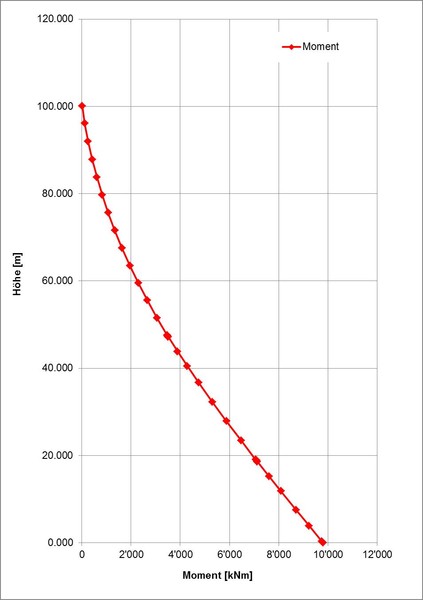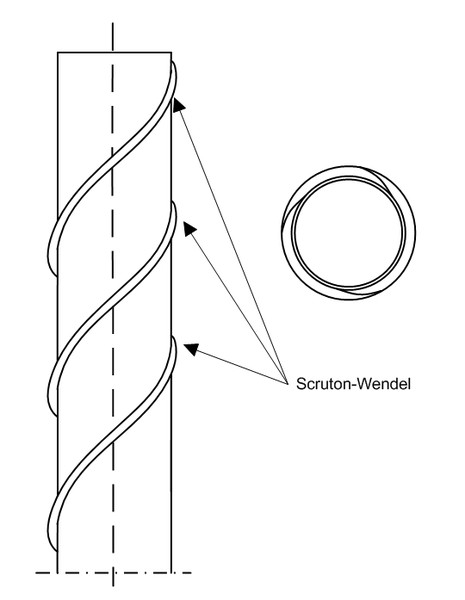It comes to vortex induced vibrations, when on the opposite sides of a structure alternating vortices peel off. If the excitation by the wind lies in the frequency range of the structure, resonance effects and a swaying of the vibrations can occur at right angles to the wind.

Vortex induced vibrations
Vortex induced vibrations
This phenomenon can occur particularly in tall, slender structures with a smooth surface. The main influencing factors are the stiffness of the structure (natural frequency as a function of mass distribution), the shape and arrangement of the cross-section (round, square, polygon; series arrangement, standalone) and the peculiarities of the structure.
The vortex shedding occurs above a certain site-specific wind speed. As a rule, the critical wind speed is a frequently occurring speed. The number of oscillation cycles and the resulting bending stress play a role relevant to design when determining the structure in the fatigue limit state .


Using the calculation formulas in DIN EN 1991-1-4 it is possible to determine the occurring bending moments of the structure. Furthermore, a corresponding number of cycles can be determined. These values can be used to carry out a fatigue life analysis of the structure.
For substructure , the DIBt guideline stipulates that if the damage caused by transverse vibrations is less than 10% of the total damage over the service life, this does not have to be taken into account in the actual fatigue calculation.
For chimneys, the only fatigue load is the swirled lateral vibrations.



Due to the swirl-excited transverse vibrations, large base moments can occur in the support area. Unanchored constructions can be in danger of tipping in the assembled state. If this is the case, it must be ensured for this construction phase by weather forecasts that the critical wind speed at which the transverse vibrations can occur is not reached for the period of the hazardous installation section.
One way of temporarily or permanently preventing lateral vibrations without having to change the main load-bearing structure is to install aerodynamic interference measures in the area of the effective length of the lateral vibrations. The so-called vortex removers are profiles that are placed in the upper part of the structures to prevent the vertebrae from continuously loosening over the height. They ensure that the flow is detached in different directions, so that there is no alternating separation.
An example of such solutions for towers/chimneys is the SCRUTON coils, which are used most frequently. These are three-way fault bars (no lattice strips), which are often installed helix-like around the structure in the upper third.
Our services
The SKI Ingenieurges. mbH can carry out static and dynamic structural analyses within the framework of structural design. These essentially comprise the following structural analyses:
- Modeling of the structure (in steel and reinforced concrete construction)
- Determination of mass distribution
- Natural frequency analysis of the structure
- Verification of turbulent transverse vibrations according to DIN EN 1991-1-4
- Geotechnical checks against tilting due to lateral vibrations
- Fatgiue analysis of the structure due to lateral vibrations
- Assessment of the hazard of a structure against swirling transverse vibrations
- Optimization of structures against turbulence-excited transverse oscillations
Latest posts
Categories

Copyright © 2024
SKI Ingenieurges. mbH
Mengendamm 12
30177 Hannover
Phone: +49 (0) 511 / 261847-0

